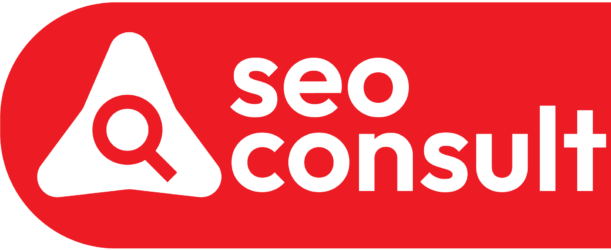In the fast-paced world of e-commerce, establishing a strong online presence is paramount to success. Implementing effective SEO strategies can significantly impact the visibility and reach of your e-commerce website. From keyword research to on-page optimization and social media integration, there are numerous tactics that can elevate your site's ranking on search engine results pages. However, the ever-evolving nature of SEO requires a strategic approach to stay ahead of the competition. Let's explore some key strategies that can propel your e-commerce website to new heights in the digital landscape.
Keyword Research
Keyword research is a fundamental aspect of developing effective SEO strategies for e-commerce websites. In the realm of e-commerce, using long tail keywords is crucial for targeting specific customer needs and increasing the likelihood of conversions. Conducting competition analysis is essential to understand the landscape and identify opportunities where these long tail keywords can be effectively utilized to gain a competitive edge.
When delving into keyword research, considering search volume is paramount. It allows e-commerce businesses to gauge the popularity and demand for certain keywords, helping them prioritize their efforts on high-impact terms. Moreover, understanding keyword intent is key to aligning the website content with what users are searching for, ensuring relevance and driving qualified traffic.
On-Page Optimization
On-page optimization plays a crucial role in enhancing an e-commerce website's visibility and ranking on search engine results pages. Meta tags are essential elements that impact how search engines understand and rank the content of a webpage. Implementing content optimization techniques ensures that the website's content is not only engaging but also relevant and easily discoverable by search engine algorithms.
Meta Tags Importance
Effective e-commerce website optimization hinges significantly on harnessing the potential of meta tags to enhance visibility and drive targeted traffic. Meta tag customization offers various SEO benefits, including providing search engines with information about a webpage's content. Implementing meta tag best practices can lead to ranking improvement, as search engines use this information to determine the relevance of a webpage to a user's search query. By optimizing meta tags with relevant keywords and compelling descriptions, e-commerce websites can increase their chances of appearing in search results and attracting potential customers. Ensuring that meta tags are accurately reflecting the content of the page is crucial for improving organic search visibility and driving qualified traffic to the site.
Content Optimization Techniques
Harnessing content optimization techniques is paramount for e-commerce websites seeking to maximize their on-page SEO potential and improve organic search visibility. Video marketing strategies play a crucial role in engaging audiences and boosting SEO. By incorporating videos that are relevant to products or services, e-commerce sites can increase user engagement and time spent on their pages, signaling search engines about the quality of the content. Additionally, utilizing infographic creation techniques can help break down complex information into visually appealing formats, making it easier for users to consume and share. Infographics not only enhance the overall user experience but also contribute to higher levels of social sharing and backlinks, which are valuable for SEO efforts. By implementing these techniques, e-commerce websites can enhance their content visibility and drive more organic traffic to their platforms.
Mobile-Friendly Design
Mobile optimization is a crucial aspect of e-commerce website design in today's digital landscape. Ensuring mobile responsiveness is not just about accommodating different screen sizes; it directly impacts user experience and conversion rates. With the increasing number of users browsing and shopping on mobile devices, having a mobile-friendly design is essential for e-commerce success.
Incorporating responsive design elements can enhance the overall user experience, leading to improved conversion rates. Studies have shown that mobile-friendly websites tend to have lower bounce rates and higher engagement levels, ultimately translating into more conversions. By optimizing your e-commerce site for mobile devices, you can tap into a significant portion of the market that prefers shopping on smartphones and tablets.
Conversion optimization is a key goal for any e-commerce business, and mobile-friendliness plays a vital role in achieving this objective. By prioritizing mobile responsiveness in your website design, you can create a seamless shopping experience for mobile users, driving conversions and ultimately boosting your online sales.
User-Focused Content
Optimizing user-focused content for e-commerce websites involves prioritizing content relevance to capture the interest of potential customers. Engagement techniques such as interactive elements, personalized recommendations, and user-generated content play a crucial role in keeping visitors on the site longer. Effective SEO optimization of user-focused content ensures that the website ranks well in search engine results, driving organic traffic and ultimately boosting conversions.
Content Relevance
Developing user-focused content that resonates with the target audience is essential for enhancing content relevance on e-commerce websites. By aligning content strategy with user intent, e-commerce sites can significantly improve their SEO performance. Understanding the needs, preferences, and pain points of the target audience allows for the creation of compelling and relevant content that drives traffic and conversions. Leveraging keyword research and user behavior data helps in crafting content that not only ranks well in search engines but also engages and converts visitors. User-focused content not only helps in improving search engine visibility but also fosters trust and loyalty among customers, ultimately leading to a more robust online presence and increased revenue for e-commerce businesses.
Engagement Techniques
Crafting engaging user-focused content is paramount for e-commerce websites seeking to captivate their target audience and drive meaningful interactions. Incorporating interactive features such as quizzes, polls, or product customization tools can enhance user engagement and encourage longer site visits. Additionally, actively soliciting and showcasing customer feedback can build trust and credibility with potential buyers. Personalized recommendations based on browsing history or purchase behavior can significantly increase conversion rates by catering to individual preferences. Implementing loyalty programs that reward customers for their engagement and purchases can foster repeat business and customer retention. By leveraging these engagement techniques, e-commerce websites can create a more personalized and immersive online shopping experience, ultimately driving higher sales and customer satisfaction levels.
SEO Optimization
Effective SEO optimization of user-focused content is essential for e-commerce websites aiming to enhance visibility and attract targeted traffic. To achieve this, link building plays a crucial role in improving search engine rankings by demonstrating the credibility and relevance of the website. Conducting competitor analysis allows for the identification of gaps and opportunities in content strategy, enabling the creation of more compelling and informative materials that resonate with the target audience. By understanding what competitors are doing well and where they fall short, e-commerce websites can tailor their user-focused content to stand out in search results and drive organic traffic. Implementing a robust SEO strategy that prioritizes user needs and preferences is key to achieving sustainable growth and success in the highly competitive e-commerce landscape.
Image Optimization
Optimizing images on e-commerce websites plays a crucial role in enhancing user experience and improving website performance. Utilizing image compression techniques helps reduce file sizes without compromising quality, leading to faster load times and better SEO rankings. Additionally, incorporating descriptive image alt tags not only improves accessibility for visually impaired users but also provides search engines with valuable information about the content of the images, boosting overall SEO.
Image file naming is another essential aspect of image optimization. By using descriptive and relevant filenames that include keywords, e-commerce websites can improve their chances of appearing in image search results. Furthermore, integrating images into the website's sitemap enhances discoverability and indexability, ensuring that search engines can crawl and display these images in search results effectively.
Site Speed Improvement
Enhancing the speed of an e-commerce website is paramount for improving user experience and search engine rankings. To achieve this, optimizing images by reducing their size and quality without compromising visual appeal is crucial. Additionally, minimizing HTTP requests by combining scripts and stylesheets can significantly reduce loading times, leading to higher conversion rates and improved SEO performance.
Optimize Images for Speed
How can e-commerce websites effectively enhance their site speed by optimizing images to improve user experience and boost SEO performance? One key strategy is through image compression, which reduces the file size of images without significantly impacting quality. By implementing image compression techniques, such as using tools like JPEG Optimizer or TinyPNG, websites can maintain visual appeal while ensuring faster loading times. Additionally, employing lazy loading can further optimize site speed by only loading images as users scroll down the page, rather than loading all images at once. This approach decreases initial loading times, enhancing user experience. By prioritizing image optimization through compression and lazy loading, e-commerce websites can improve site speed, reduce bounce rates, and ultimately enhance their SEO performance.
Minimize HTTP Requests
To improve site speed and overall performance, e-commerce websites can effectively reduce load times by minimizing the number of HTTP requests made when users access their webpages. Resource consolidation plays a crucial role in enhancing website performance. By combining multiple resources like CSS and JavaScript files into a single file, the number of HTTP requests can be reduced, ultimately speeding up load times. Additionally, implementing browser caching can significantly improve load times. When users revisit the website, browser caching allows previously loaded resources to be retrieved from the cache instead of sending new HTTP requests to the server. This not only minimizes load times but also enhances the overall user experience, leading to higher customer satisfaction and potentially increased conversions.
Backlink Building
Backlink building is a crucial element in the search engine optimization strategy for e-commerce websites, playing a significant role in improving organic search visibility and driving traffic. To effectively build backlinks, e-commerce sites can employ various link building tactics such as creating high-quality content that naturally attracts links, guest posting on relevant websites, and engaging in strategic partnerships with influencers or industry experts. Outreach campaigns are also essential in acquiring backlinks, involving reaching out to website owners, bloggers, and journalists to promote content and secure backlinks. By implementing a diverse range of link building tactics and conducting targeted outreach campaigns, e-commerce websites can enhance their backlink profile, increase domain authority, and ultimately improve their search engine rankings. It is crucial to monitor the quality and relevance of backlinks regularly to ensure they positively impact the website's SEO performance and drive valuable traffic.
Social Media Integration
Social Media Integration is a critical component of an effective SEO strategy for e-commerce websites, providing opportunities to amplify brand visibility and engage with a broader audience across various platforms. To leverage social media effectively, e-commerce sites can explore influencer partnerships and utilize targeted social media ads to reach a larger audience segment. Collaborating with influencers can help showcase products to a wider demographic and build credibility through authentic recommendations. Moreover, e-commerce platforms can encourage customer reviews on social media, as positive reviews can enhance brand reputation and attract new customers.
Local SEO Strategies
Integrating effective local SEO strategies is paramount for optimizing the visibility and relevance of e-commerce websites within specific geographic regions, fostering increased organic traffic and potential conversions through targeted localization efforts. One essential aspect of local SEO is local citation building. By ensuring consistent and accurate information across online directories and platforms, e-commerce websites can improve their credibility and visibility in local search results. Additionally, Google My Business optimization plays a crucial role in local SEO success. Optimizing the Google My Business listing with relevant keywords, accurate business information, and engaging visual content can enhance the website's local search ranking and attract more local customers. Leveraging these strategies not only boosts local visibility but also builds trust with the target audience, ultimately driving more traffic and conversions for e-commerce websites looking to establish a strong presence in specific geographic areas.
E-commerce SEO Tools
How can e-commerce businesses leverage advanced SEO tools to enhance their online visibility and drive targeted traffic and conversions? Utilizing sophisticated tools for competitor analysis is crucial in understanding the strategies that competitors are employing to rank well in search results. By conducting in-depth competitor analysis, e-commerce websites can identify gaps in their own SEO strategy and capitalize on opportunities for improvement.
Moreover, implementing robust conversion tracking tools is essential for monitoring the effectiveness of SEO efforts in driving conversions. Tracking key metrics such as conversion rates, click-through rates, and revenue generated from organic search traffic provides valuable insights into the impact of SEO initiatives on the bottom line. This data-driven approach allows e-commerce businesses to make informed decisions about optimizing their SEO strategies for maximum conversion potential.
Monitoring and Analytics
Effective monitoring and analytics are foundational pillars for e-commerce businesses seeking to measure and optimize the performance of their SEO strategies. Conversion tracking plays a vital role in understanding the effectiveness of SEO efforts in driving desired actions on the website, such as purchases or sign-ups. By monitoring conversion rates for different keywords or pages, businesses can refine their SEO strategies for better results. Additionally, competitor analysis through analytics tools helps in identifying opportunities and gaps in the market, allowing businesses to stay ahead in the competitive e-commerce landscape.
Performance monitoring is another crucial aspect of SEO analytics for e-commerce websites. Regularly tracking key performance indicators (KPIs) like organic traffic, bounce rates, and average session duration provides valuable insights into the impact of SEO activities on website visibility and user engagement. Furthermore, customer behavior analysis enables businesses to understand how visitors interact with the site, which pages are most popular, and where improvements are needed to enhance the overall user experience and drive conversions. By leveraging monitoring and analytics tools effectively, e-commerce websites can make informed decisions to optimize their SEO strategies and achieve sustainable growth.
Frequently Asked Questions
How Can I Effectively Utilize Voice Search Optimization for My E-Commerce Website?
Voice search trends indicate a growing shift towards hands-free search queries. To optimize for this, consider implementing techniques like using long-tail keywords, structuring content in a conversational tone, and providing concise answers to common questions. Additionally, optimizing your website for local search can further enhance voice search performance. By aligning your content with these optimization strategies, you can effectively leverage voice search to improve the visibility and accessibility of your e-commerce website.
What Are Some Unique Strategies for Optimizing Product Pages for Search Engines?
When optimizing product pages for search engines, focusing on image optimization and schema markup can enhance visibility and user experience. Implementing internal linking strategically can establish a strong website structure while improving SEO. By prioritizing user experience, such as fast loading times and easy navigation, search engines are more likely to rank the page higher. These unique strategies can lead to increased organic traffic and better conversion rates for e-commerce websites.
How Can I Leverage Influencer Marketing to Improve My E-Commerce Website's Seo?
Incorporating influencer collaborations in your marketing strategy can significantly impact SEO for e-commerce websites. Leveraging influencer marketing can enhance your backlink strategy by acquiring high-quality backlinks from reputable sources. Influencers can create authentic content that drives engagement and visibility, leading to improved search engine rankings. By strategically partnering with influencers who align with your brand, you can boost your website's SEO performance through increased online presence and credibility.
What Are Some Advanced Techniques for Optimizing Category Pages for Better Search Visibility?
To enhance search visibility of category pages, consider incorporating internal linking to guide search engines to these pages. Implement schema markup to provide structured data that aids search engines in understanding the content. Utilize content silos to organize and optimize related content within each category. Additionally, optimize images on category pages by using descriptive filenames and alt text. These advanced techniques can improve the overall SEO performance of category pages.
How Important Is Site Security in Relation to SEO for E-Commerce Websites?
Site security, particularly encryption, is paramount in SEO for e-commerce websites. Cybersecurity directly impacts rankings due to trust and safety concerns among users and search engines. An unsecured site can lead to data breaches, compromising customer information and damaging brand reputation. Implementing robust security measures not only safeguards sensitive data but also enhances SEO performance by signaling to search engines that the website is trustworthy, ultimately boosting rankings.
Conclusion
In conclusion, implementing effective SEO strategies for e-commerce websites is crucial for driving organic traffic and increasing online visibility. By conducting thorough keyword research, optimizing on-page content, and focusing on user experience, e-commerce businesses can improve their search engine rankings and attract more potential customers. Utilizing e-commerce SEO tools, monitoring analytics, and integrating social media can further enhance the overall SEO strategy for long-term success in the competitive online marketplace.










